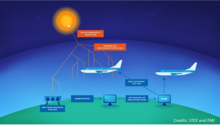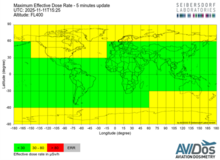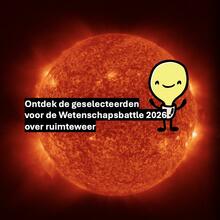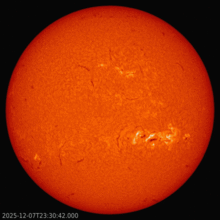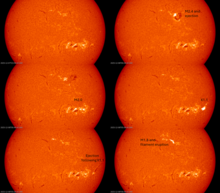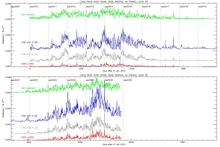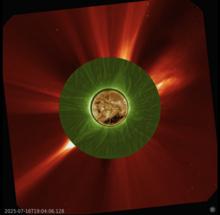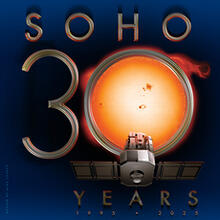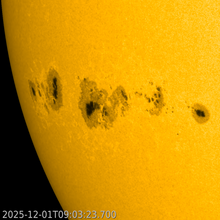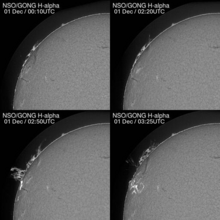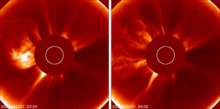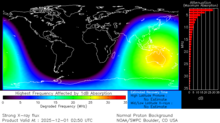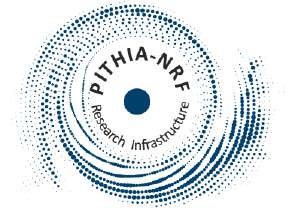news
Submitted on 2026-01-07
The first Proba-3 ASPIICS Guest Investigator call is now open, with a submission deadline of 12 February 2026. The GI programme offers access to Proba-3 ASPIICS data and the unique chance to participate in instrument commanding.
Submitted on 2026-01-05
Sunspot activity was quite variable during December 2025, with some large and complex sunspot regions at the beginning and end of the month.
Submitted on 2025-12-09
An inflight incident with an Airbus 320 on 30 October was most likely triggered by the impact of a high-energy particle resulting in an uncalled Single Event Upset ("bit flip"). The required soft- and/or hardware patch grounded 6000 aircraft.
Submitted on 2025-12-09
Researchers share their most recent knowledge about spaceweather with thousands of Flemish primary school kids during the Wetenschapsbattle (Battle of Scientists).
On February 6th 2026, two scientists from the Royal Observatory of Belgium will compete for the trophy of most eloquent scientist. Cis Verbeeck and Andreas Debrabandere were selected by the pupils of primary school De Mozaïek in Kessel-Lo.
Submitted on 2025-12-08
NOAA 4299 produced an M8 flare late on 6 December. The associated coronal mass ejection (CME) is earth-directed and may cause a strong geomagnetic storm on 8-9 December. The X-class flare of 8 December had NOAA 4298 as its source.
Submitted on 2025-12-08
A new data product reflects the progress that the LYRA team has made to discern the different instrumental degradation of quiet-Sun, active-region, and flare signals, and how to correct the data accordingly. The LYRA team wants to present this 15-year daily dataset to the solar community, in order to enable a comparison with various solar indicators, and to study the solar cycle.
Submitted on 2025-12-05
Exactly 1 year ago, December 5, the duo satellite Proba-3 left Earth to head to space. The telescope ASPIICS, whose task is to make perfect total solar eclipses from space, was onboard. Now, 1 year later, ASPIICS has already delivered a wealth of amazing pictures of the solar atmosphere close to its surface, a treasure box for solar scientists.
Submitted on 2025-12-03
SOHO was launched on 2 December 1995. Three decades later, it is still providing valuable space weather data.
Submitted on 2025-12-01
A giant sunspot region has rounded the southeast solar limb and has been the source of several M-class flares. The X-class event early on 1 December was produced by a smaller region near the northeast limb. Further strong flares are expected in the coming days.
Submitted on 2025-11-26
The E-SWAN booklets address the real-world impact of solar and geomagnetic activity, focusing on how such phenomena can influence everyday activities and industries, tailored to engage a general audience.
Pages
Zircon - This is a contributing Drupal Theme
Design by
WeebPal.








